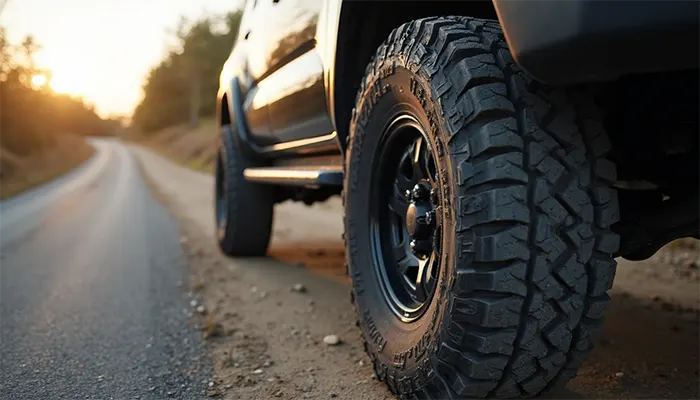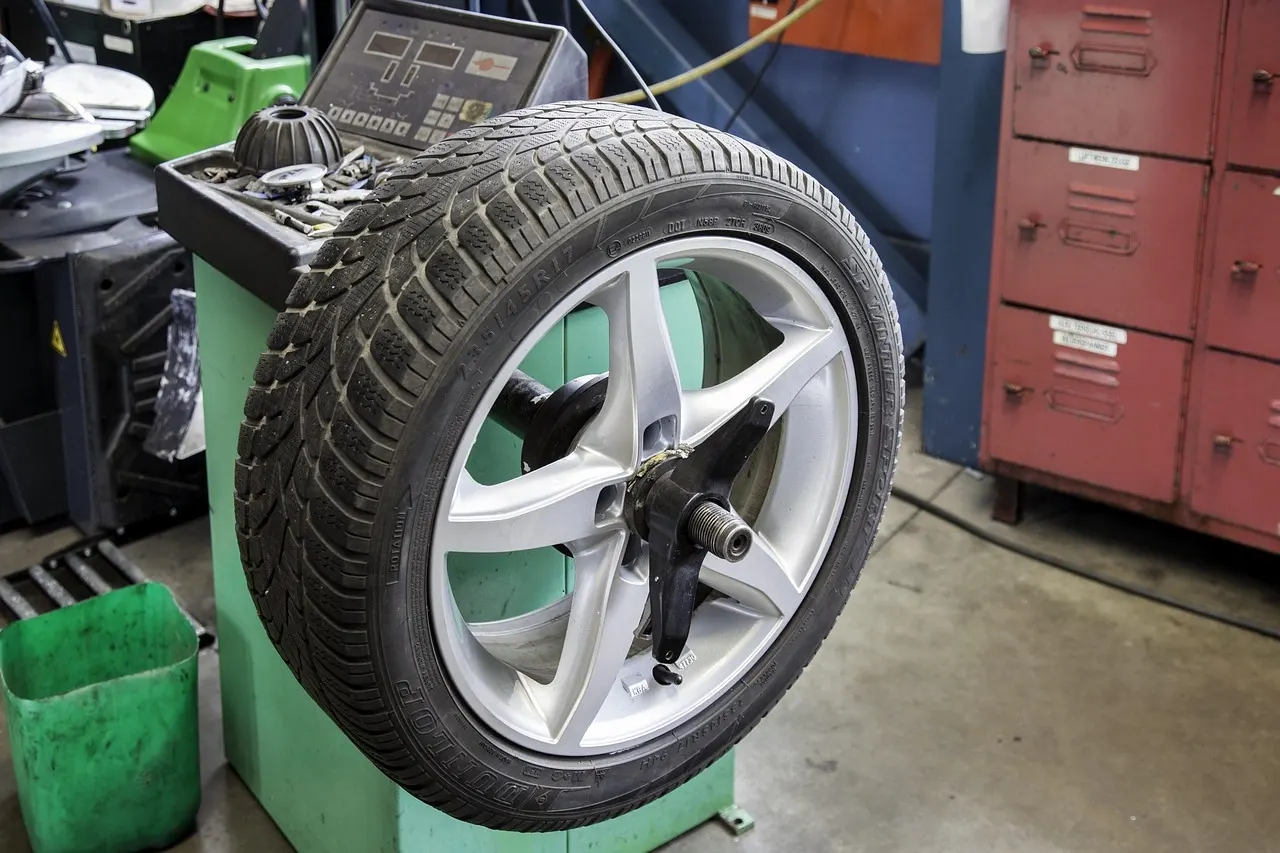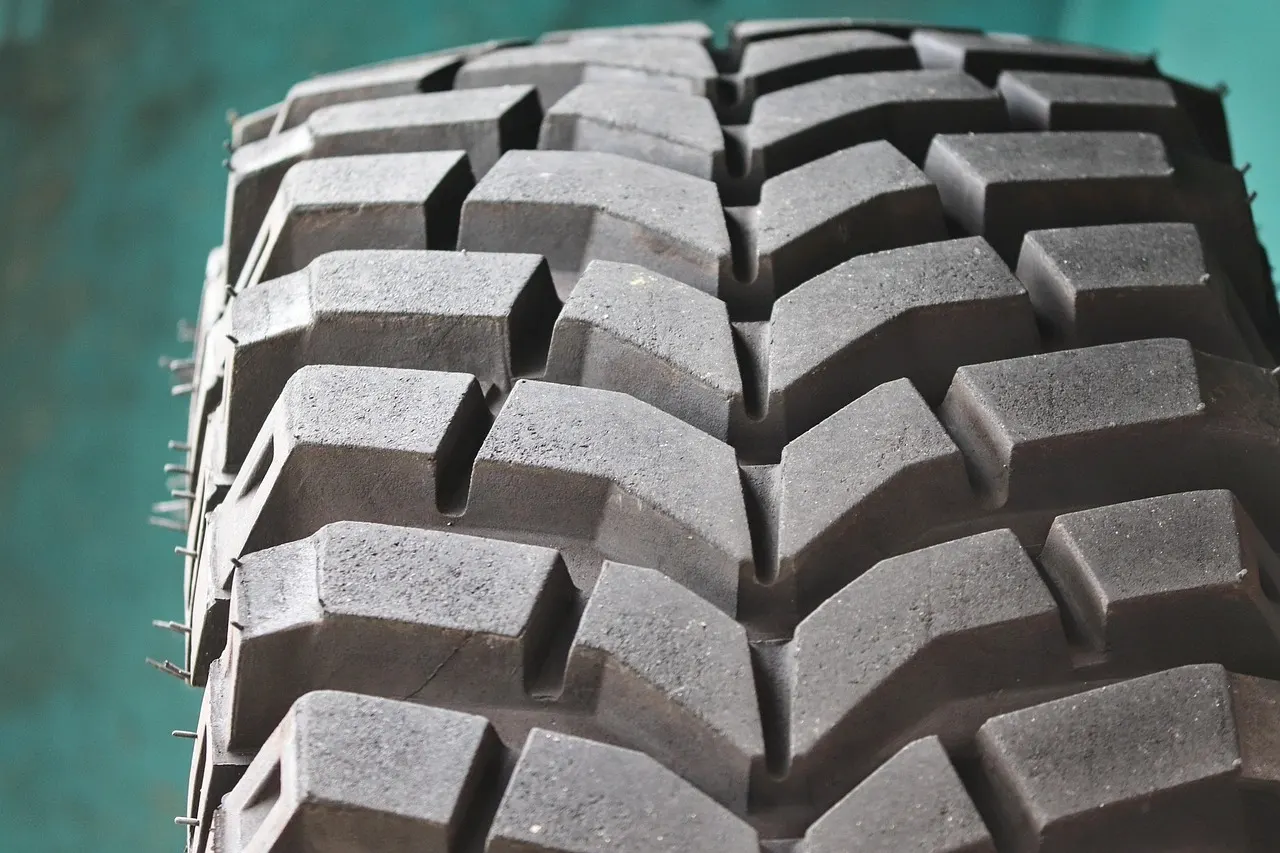
How to Choose the Best All-Terrain Tires for Daily Driving and Weekend Adventures
Tires make the biggest difference when upgrading your vehicle's performance. This holds especially true when you're searching for the best all-terrain tires that handle both daily commutes and weekend adventures.
Every vehicle depends on quality tires, but the stakes get higher when you take your 4x4 truck, Jeep, or SUV off-road. With 767 different tire models represented in consumer surveys covering over 3.2 billion miles of real-world driving, finding that sweet spot between on-road comfort and off-road capability can feel overwhelming.
All-terrain tires excel at striking a usable balance across most terrains. They shine on loose gravel roads and wet conditions, while some perform nearly as well as dedicated snow tires. The key lies in understanding your specific needs. Those chunky, rugged-looking tread patterns you see on all-terrain tires are specifically engineered to boost traction in sand, mud, and loose gravel, all while delivering a comfortable daily driving experience.
This guide walks you through the world of all-terrain tires, helping you select options that won't disappoint whether you're heading to work or hitting the trails on weekends.
Understanding All-Terrain Tires

Image Source: https://pixabay.com/
The name "all-terrain" tells you exactly what these tires are built for. While all-season tires focus on when you can use them, all-terrain tires emphasize where they can perform. They're a smart compromise between standard highway tires and specialized off-road options.
What makes all-terrain tires different from all-season tires
All-terrain tires beat all-season tires off-road thanks to their more aggressive tread pattern designed for unpaved surfaces. The main difference? Tread design. All-terrain tires have bigger voids and open tread blocks on the shoulders for better traction. These patterns do a great job clearing away mud, snow, and debris as you drive.
All-season tires, on the other hand, dominate on paved roads with superior comfort, handling, and fuel efficiency. They grip dry pavement better due to their specific tread patterns and rubber compounds. Plus, all-season tires run quieter and handle bumps more smoothly than their all-terrain counterparts.
That said, all-terrain tires handle light snow surprisingly well. Braking tests on snowy surfaces at 40 mph showed all-terrain tires need 56 meters to stop - longer than specialist winter tires but still respectable. Many all-terrain tires carry the M+S (Mud and Snow) rating, with some earning the Three-Peak Mountain Snowflake certification for excellent performance in severe snow conditions.
Key features of all-terrain tires for mixed use
The standout feature of all-terrain tires is their open-tread design that boosts traction on off-road surfaces. This design includes interlocking tread elements that grip rocks and mud effectively while still handling well on paved roads.
Many all-terrain tires also pack reinforced sidewalls for increased durability and puncture protection. This tougher construction resists damage better and provides improved traction on slippery surfaces.
Most all-terrain tires use radial construction with steel belts running perpendicular to the tread. The "LT" (Light Truck) versions typically feature stronger sidewalls to handle heavier loads and tougher off-road conditions. Some models even include wraparound tread that extends onto the sidewall for extra protection when off-roading.
The rubber compound in all-terrain tires balances good grip across various surfaces with reasonable tread wear. It's typically softer than highway tire compounds for better off-road traction but harder than mud-terrain compounds for longer life.
Difference between all terrain and mud tires
All-terrain tires sit right between highway tires and specialized mud-terrain options. Think of them as "jack-of-all-trades" tires since they handle almost anything except deep mud or extreme rock crawling.
Compared to mud-terrain tires, all-terrain options deliver noticeably more comfort with a quieter highway ride. They also offer better fuel economy - you'll see at least a 1 mile-per-gallon difference between comparable all-terrain and mud-terrain radials of the same size.
When it comes to lifespan, all-terrain tires typically outlast mud-terrain alternatives. Expect around 45,000-65,000 miles from all-terrains versus 35,000-45,000 miles from mud-terrains. All-terrain tires also cost about $50 less per tire than comparable mud-terrain options.
While all-terrain tires might struggle in extremely muddy or rocky conditions, they excel at versatility. They're perfect for drivers who split time between highway driving and moderate off-road adventures.
Matching Tires to Your Driving Style
Picking the right all-terrain tires starts with being honest about your driving habits. Here's the reality: the more capable a tire is off-road, the less civilized it behaves on pavement. Your perfect balance depends on understanding your typical driving scenarios.
Daily driving vs. weekend off-roading
How you split your time between roads and trails should drive your tire selection. On-road all-terrain tires work best for vehicles spending at least 80 percent of their time on pavement with occasional easy and intermediate trail use. These tires keep on-road trade-offs minimal while giving you more off-road capability than standard all-season options.
If your vehicle splits time more evenly between highways and trails, off-road all-terrain tires make more sense. You'll notice these look more aggressive with larger, more defined tread blocks, deeper voids between blocks, and tread elements extending onto the tire's shoulder.
Most drivers who commute weekdays and explore weekends find all-terrain tires hit the sweet spot. They handle highway driving well while offering enough capability for casual off-roading. Sure, they might be slightly noisier than street-only tires, but their overall performance on standard roads stays solid.
How much off-road capability do you really need?
Too many drivers buy more off-road capability than they'll ever use, giving up on-road comfort for no good reason. Before choosing, think about what surfaces you actually encounter regularly.
All-terrain tires excel in:
- Sand, light snow, and ice
- Dirt, grass, and gravel
- Loose surfaces and slick rock
Rarely venture beyond gravel roads or occasional trail driving? An on-road biased all-terrain tire gives you plenty of capability. Regularly tackle more challenging terrain? Off-road focused all-terrain tires become worth their on-road compromises.
The simple truth: if you drive as much on dirt or unpaved roads as on paved roads, all-terrain tires make the most sense. Stick primarily to streets and highways? Highway or sport truck tires might serve you better.
Balancing comfort, noise, and traction
All-terrain tires represent a compromise between conflicting priorities. Those tread patterns that boost off-road traction inherently create more road noise. Similarly, tougher sidewalls that resist punctures off-road typically deliver a firmer ride on highways.
Prioritizing comfort? Look for all-terrain tires with less aggressive tread patterns. Modern technology has improved significantly, allowing many all-terrain tires to deliver strong off-road performance while keeping road noise minimal. Tires like the Continental TerrainContact A/T and Michelin LTX A/T2 offer excellent blends of off-road durability and on-road comfort.
Wet weather performance deserves attention too. All-terrain tires significantly outperform most mud-terrain options in wet on-road conditions, making them safer for daily driving in varying conditions.
Consider your vehicle type as well. CUVs and SUVs that often go camping or venture off paved roads benefit from all-terrain tires, while vehicles that rarely leave pavement might not need them. Your tire choice should reflect both your current driving habits and realistic future needs rather than aspirational off-road adventures.
Types of All-Terrain Tires Explained

Image Source: https://pixabay.com/
All-terrain tires come in different specialized categories designed to match your specific driving needs. Getting familiar with these distinctions helps you pick tires that actually deliver the performance you want, whether you're cruising highways or tackling trails.
Best on-road all-terrain tires
On-road all-terrain tires prioritize comfortable daily driving while still offering some off-road capability. These tires focus on ride comfort and noise reduction while maintaining decent road manners for light off-road travel. Tire Rack surveys consistently show the Bridgestone Dueler A/T Ascent, Cooper Discoverer Road+Trail AT, and Falken WildPeak A/T Trail earning excellent ratings for on-road performance.
Best off-road all-terrain tires
Vehicles that split time more evenly between pavement and trails benefit from off-road focused all-terrain tires with enhanced capability. The BFGoodrich All-Terrain T/A KO2 shows excellent grip off-road, setting the fastest dirt handling time in comparative tests. It particularly shines in snow conditions, leading snow braking tests and performing strongly in snow handling.
Best rugged terrain tires
Rugged terrain (R/T) tires hit the perfect sweet spot between all-terrain and mud-terrain options. They combine the road comfort of all-terrain tires with the off-road durability and traction of mud-terrain tires. Popular options include the Cooper Discoverer Rugged Trek, which uses deep starting tread depth to handle diverse terrains. Its Stone Blockades™ technology ejects lodged stones while Whisper Grooves™ technology reduces on-road noise.
Best truck all terrain tires
Trucks that demand extra durability have several solid options. The Toyo Open Country AT III offers strong grip in most conditions while maintaining good noise levels at moderate speeds. It demonstrates exceptional snow performance, leading snow handling tests in comparative evaluations.
How to Choose the Best All-Terrain Tires
Check your vehicle's load rating and tire size
Start by finding your vehicle's tire information on the driver's side door placard or in your owner's manual. The tire load rating is a numerical code that shows the maximum weight a single tire can carry when properly inflated. Trucks that frequently carry heavy loads or tow trailers need tires with higher load indices to handle the extra weight. Light truck (LT) tires use load range letters with B, C, D, E, and F showing increasing load capacities and maximum pressures. Work trucks that tow regularly typically need load ranges C, D, and E.
Understand tread patterns and sidewall strength
Tread patterns directly affect performance across different terrains. All-terrain tires feature moderate tread depth with staggered blocks that boost traction through increased biting edges. The spaces between tread blocks, called grooves, help channel mud and debris away. The void ratio—how much open space exists between tread blocks—makes a big difference in performance; higher ratios shed mud effectively, while lower ratios increase grip on hard surfaces. Reinforced sidewalls with shoulder lugs improve traction when aired down and protect against punctures in off-road environments.
Look for Three-Peak Mountain Snowflake certification
The Three-Peak Mountain Snowflake (3PMSF) symbol shows a tire meets specific winter performance standards. Unlike the basic M+S (Mud and Snow) designation that's based just on tread pattern geometry, the 3PMSF certification means the tire has passed minimum thresholds in snow traction testing. These tires use special rubber compounds that stay flexible in cold conditions (at or below 40°F), giving you better grip on snow and ice-covered roads.
Consider warranty and tread life
Quality all-terrain tires typically offer treadwear warranties from 45,000 to 65,000 miles. The Falken Wildpeak A/T3W comes with a 55,000-mile warranty, while the Goodyear Assurance MaxLife offers an impressive 85,000-mile warranty with a 60-day satisfaction guarantee. When looking at warranties, check if they require proof of regular tire rotation and maintenance records.
Evaluate price vs. performance
All-terrain tires typically cost between $200-$400 per tire depending on size, manufacturer, and load rating. While mud-terrain tires cost about $50 more per tire, they deliver less fuel efficiency (-1 MPG) and shorter lifespans. Find off road tires at https://www.performanceplustire.com/ that match your specific needs and budget. The best tire balances your driving habits, terrain requirements, and comfort expectations without paying extra for capabilities you'll never use.
Top Tips for Getting the Most Out of Your Tires
Rotate your tires regularly
Regular rotation helps distribute wear evenly across all four tires, extending their overall lifespan. Most vehicles benefit from tire rotation every 6,000 to 8,000 miles. Frequent rough terrain driving calls for more frequent rotation.
Off-road vehicles with a full-size spare should consider the "clockwise five-tire rotation" method. This approach ensures each tire serves as the spare at some point, promoting uniform wear across all five tires. The pattern moves the spare to the passenger rear position, then shifts each tire clockwise around the vehicle.
Maintain proper tire pressure
Proper inflation keeps your tires performing safely and lasting longer. Underinflated tires cause poor handling, reduced fuel efficiency, and increased risk of tire failure. Overinflation leads to harsh rides, poor handling, and irregular wear.
Check tire pressure monthly when tires are cold, since readings increase temporarily after extended driving. Your vehicle's door placard or owner's manual shows the correct pressure—not the tire sidewall. Tire pressure drops about 1 PSI for every 10-degree temperature decrease.
When to air down for off-road use
Lowering tire pressure before hitting trails offers perhaps the most effective way to improve off-road performance. This technique increases the tire's contact patch with the ground, boosting both traction and ride quality.
Start at 20 PSI for non-beadlock wheels and work downward, though rarely go below 10 PSI to prevent de-beading. Beadlock wheels allow you to safely air down to 5-7 PSI. Sand and snow conditions may benefit from even lower pressures.
Signs it's time to replace your tires
Replace tires once tread depth reaches 2/32 of an inch (1.6mm). Check this using a penny—if Lincoln's head shows when inserted into the tread grooves, you need replacement.
Watch for these warning signs:
- Uneven tread wear (may indicate alignment issues)
- Visible cracks or bulges on sidewalls
- Decreased traction or increased road noise
- Age (even with adequate tread, tires over 6 years old should be inspected regularly)
All-terrain tires typically last 40,000-60,000 miles, depending on driving conditions. Regular inspection helps determine when replacement becomes necessary, ideally before reaching minimum legal tread depth for optimal safety.
Conclusion
Picking the right all-terrain tires boils down to understanding your specific driving needs and finding that perfect balance. Throughout this guide, we've shown you how these versatile tires bridge the gap between daily commuting comfort and weekend adventure capability. Your choice should reflect an honest look at where and how you actually drive rather than wishful off-road dreams.
The main difference between various all-terrain options comes down to their design priorities. On-road focused models put comfort and quiet operation first while still offering light off-road capability. Off-road focused versions give up some on-road refinement for better trail performance. Rugged terrain options sit right in that sweet spot between all-terrain versatility and mud-terrain capability.
Proper maintenance makes a huge difference in getting the most from your investment. Regular rotation, keeping the right tire pressure, and knowing when to air down for off-road trips all help maximize value. Spotting the signs of tire wear early means you can replace them before safety gets compromised.
The right all-terrain tires do more than just meet specifications—they change how your vehicle handles both daily drives and weekend trips. They give you confidence when weather turns bad and open up new places to explore without needing different tires for each type of terrain. Best of all, they deliver this flexibility without the harsh trade-offs you get with more specialized tire types.
Finding this balance doesn't mean spending extra money on features you'll never use. Focus on matching your real driving habits with tires that perform well in those conditions. The perfect all-terrain tire isn't always the priciest or most aggressive-looking one—it's the tire that fits your specific needs without making your daily driving worse.
FAQs
Q1. What's the main difference between all-terrain and all-season tires? All-terrain tires have a more aggressive tread pattern designed for unpaved surfaces, offering better off-road performance. All-season tires excel on paved roads, providing superior comfort, handling, and fuel efficiency for everyday driving.
Q2. How often should I rotate my all-terrain tires? It's recommended to rotate your all-terrain tires every 6,000 to 8,000 miles. However, if you frequently drive in rough terrain, more frequent rotation may be necessary to ensure even wear across all tires.
Q3. Are all-terrain tires good for snow driving? Many all-terrain tires perform well in light snow conditions. Look for tires with the Three-Peak Mountain Snowflake (3PMSF) certification, which indicates they've passed specific winter performance standards and offer better traction in snowy conditions.
Q4. How long do all-terrain tires typically last? All-terrain tires generally last between 40,000 to 60,000 miles, depending on driving conditions and maintenance. Some high-quality options may even offer treadwear warranties up to 65,000 miles.
Q5. Should I air down my all-terrain tires for off-road driving? Yes, decreasing tire pressure before off-road driving can significantly improve traction and ride quality. For non-beadlock wheels, start at 20 PSI and work downward, but avoid going below 10 PSI to prevent de-beading. Always remember to re-inflate your tires before returning to paved roads.